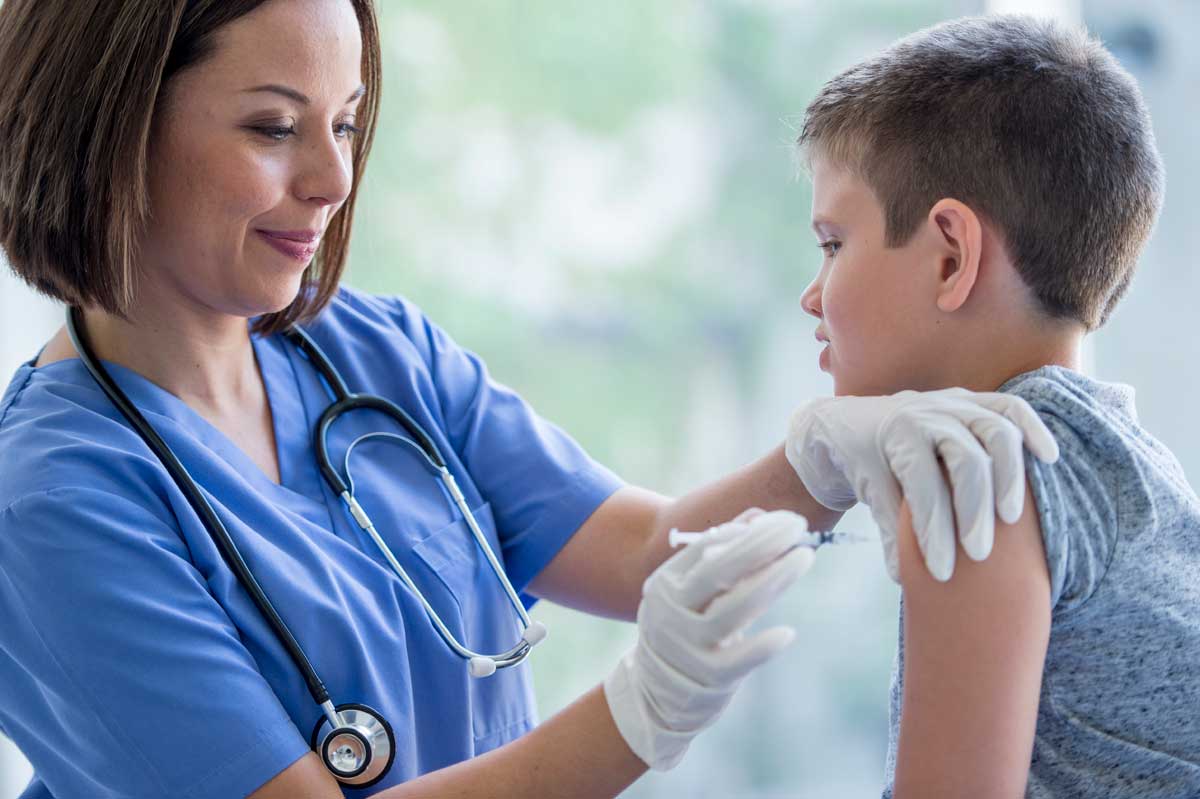Maternity and child health clinics and a National Immunisation Programme supporting children's health
29.06.2022
For over one hundred years, maternity and child health clinics in Finland have been offering guidance and information on children’s health. The vaccinations administered at the clinics have helped to eradicate many infectious diseases from Finland that are life-threatening for children.
“Finns are incredibly proud of their maternity and child health clinics. The trump cards of the Finnish maternity and child health clinics are that citizens have a huge amount of trust in them and the fact that the clinics’ services are provided to the entire population on an equal basis,” says Helene Laurent, specialist in ear, nose and throat diseases, who defended her thesis on the development of the maternity and child health clinics.
In Finland, the maternity and child health clinics are run by trained nurses. They provide expectant mothers with advice on motherhood, they measure, weigh and vaccinate children under school age, monitor the development of children and provide advice on how to keep little ones healthy. In the 1950s, the nurses prescribed vitamin D for children with rickets, carried out check-ups for tuberculosis and advised parents to toughen up their children by making them spend time outdoors and taking babies outside to sleep even in freezing temperatures.
Milk centres as pioneers of health clinic operations
The maternity and child health clinic activities were first targeted at the poor living in towns and cities. The target group was then extended to the working class living in towns and cities, the rural population and then gradually to the entire population.
“Maternity and child health clinic activities started at the beginning of the 1900s, with the Maitopisara (milk droplet) centres, organised by the Maitopisarayhdistys (milk droplet association), which distributed fresh milk to children of poor mothers as poor relief. In return, mothers were required to take their children for regular medical examinations and to agree to home visits by nurses. In 1909, the charitable Maitopisara activities were already being carried out in 25 towns and industrial districts, and in 1917 half of the mothers in Tampere relied on the operations,” Laurent says.
In the 1920s the maternity and child health clinic activities expanded, became a professional operation and transferred to the responsibility of civic organisations. In 1920, when Arvo Ylppö returned from Germany to Finland, the Mannerheim League for Child Welfare was established, followed by the Folkhälsan organisation the following year. In 1925, the local associations of the Mannerheim League had maternity and child health clinics in 26 towns and in 1930 the number had risen to 60. The Mannerheim League also began to train nurses.
Mobile clinics during wartime
“The Second World War was a momentous time, as it was necessary to set up mobile maternity and child health clinics for evacuated migrants, so the operations of the clinics were expanded to the countryside. In 1940, five paediatricians and district nurses travelled around Finland holding maternity and child health clinics in areas populated by the evacuees. The last maternity and child health clinic bus travelled around the remote areas of Lapland in 1953.”
The aim was, however, to establish permanent maternity and child health clinics. In 1940, there were 144 permanent maternity and child health clinics in Finland. Most of them were maintained by the Mannerheim League, and one quarter were municipal. Folkhälsan's health clinics were located in Ostrobothnia. Under new laws laid down in 1944, maternity and child health clinics were made statutory and subject to state aid. The transition period for the laws was five years, so in 1949 all municipalities were required to offer maternity and child health clinic services.
Municipal clinic services offered to all children in the 1950s
After the war, during the 1950s to 1970s, maternity and child health clinic operations in the Finnish countryside took place in health care buildings, which had residential and reception facilities for both district nurses and midwives. A doctor would visit the centres once or twice a month to provide appointments. The health care buildings are no longer used for their original purpose.
“Gradually, all maternity and child health clinic operations were transferred to primary health care provided by municipalities and social services. By the mid-1950s all families used maternity and child health clinic services,” says Laurent.
National Immunisation Programme
“The smallpox vaccination introduced in 1802 had been mandatory for children under the age of two ever since 1883. The diphtheria and tuberculosis vaccinations introduced during the Second World War proved very effective and people were taught to go to the maternity and child health clinic to be vaccinated. After the introduction of vaccinations for whooping cough, tetanus and polio, the National Immunisation Programme was created in the 1950s. The new vaccination act, which entered into force in 1952, made all vaccinations optional and prescribed that basic vaccinations must be administered at a maternity and child health clinic and by a school nurse,” Laurent says.
Vaccination against diphtheria and measles are good examples of the benefits of vaccination in the prevention of children's diseases. The wartime diphtheria epidemic continued until 1949. The disease spread rapidly in the cramped conditions in cities and towns but was eradicated from Finland with vaccination. The measles virus is one of the most infectious viruses. Measles has been eradicated in Finland, but if the vaccination coverage falls then the disease may spread again.
“I recommend vaccination because even if a disease does not exist in Finland, it doesn’t mean it has been eradicated all over the world. All dangerous diseases still exist outside of Finland, and without vaccination there is a high risk of infection,” Laurent says.
Read also:
